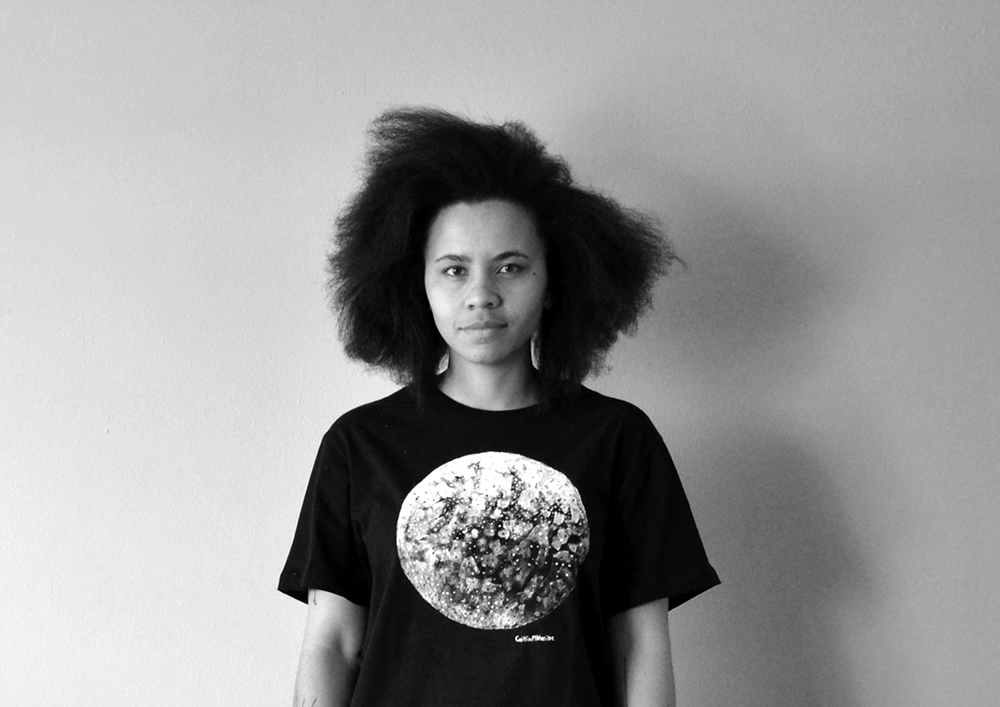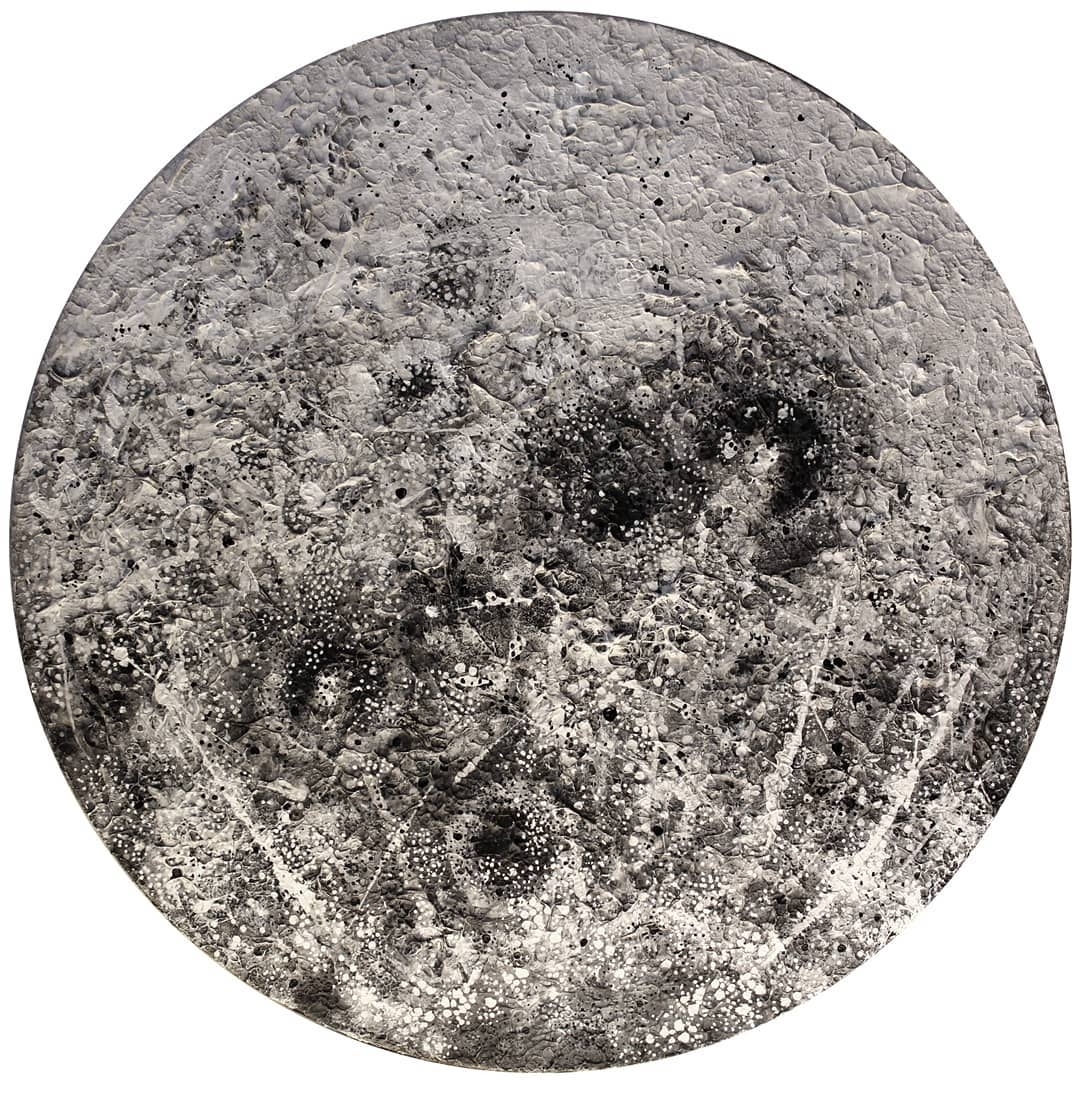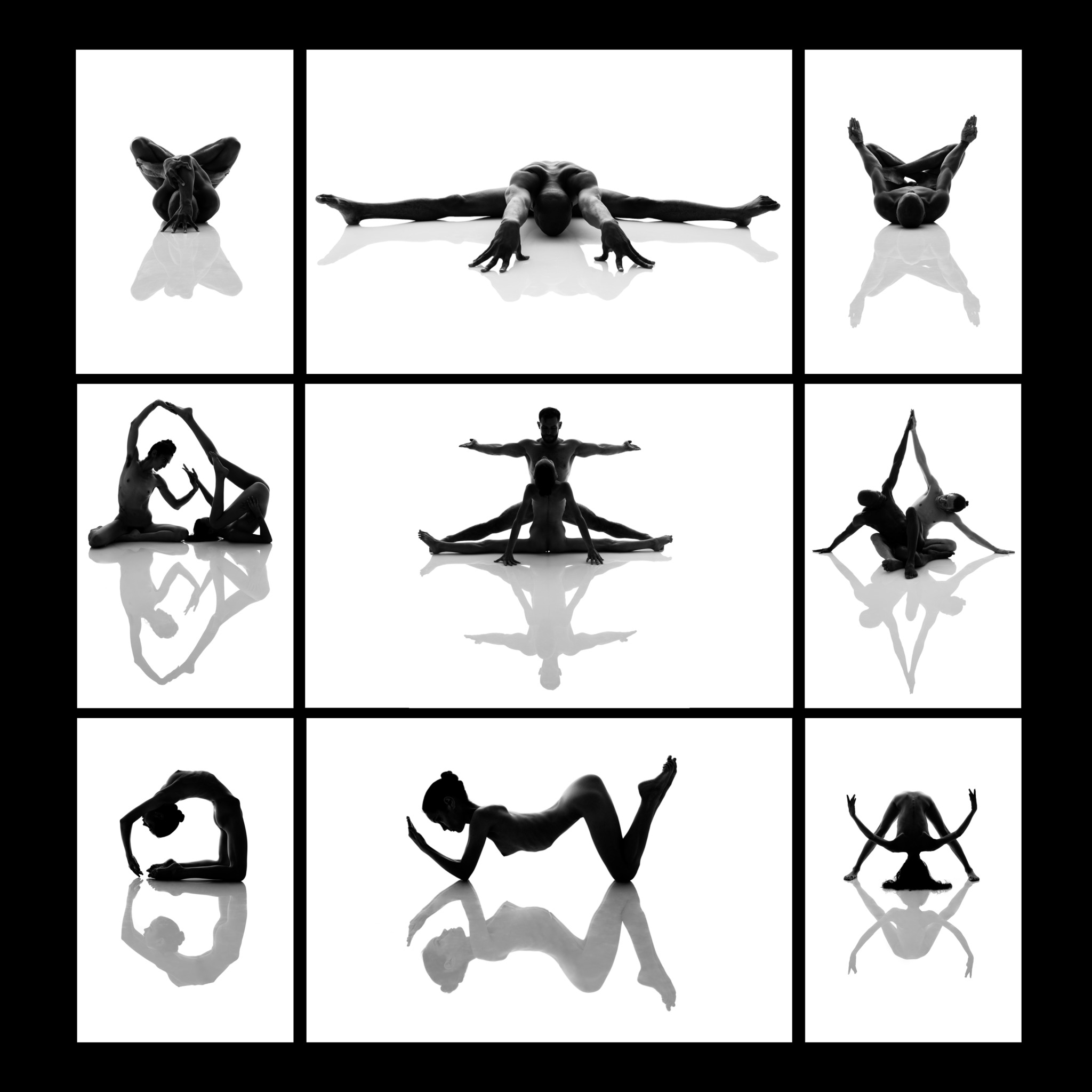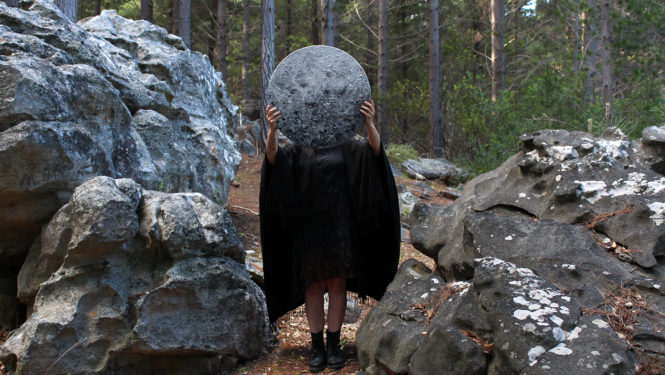Welcome to the fourth in our Boundless Space storytelling series, which introduces just a few of the astonishing artists who are contributing work to the upcoming Boundless Space: The Possibilities of Burning Man online auction. A diverse and delightful collection of work by 180 artists will go on auction. We’re inviting YOU and the world to peruse the richly illustrated online catalogue — which is now live! Online bidding will be open September 30 to October 8, 2021. Proceeds from the Boundless Space auction will support participating artists and Burning Man Project.
Introducing Caitlin Mkhasibe, Aranka Israni, and Asante Salaam, three artists whose practices explore the human experience beyond dualities and hierarchies. Each woman’s work references profoundly elemental themes — from celestial bodies, to the cycles of human transformation, to physicality and worship.
Caitlin Mkhasibe

Caitlin Mkhasibe is working from home in South Africa during a third wave of COVID on a partial lockdown, in her home studio. Her worktable is surrounded by plants that she propagates.
A drummer in a band called Morning Pages, Mkhasibe says, “The songs are quite long. Very instrumental, textural. Sometimes I try and mimic those textures when I make art. It’s very improvised; especially when it’s abstract, it’s not planned. It’s the same way I treat playing drums. Texture ties everything together.
“I always found nature very healing; it helps me tap into creativity and the textures. I echo them. Bark or the way the light plays on a river… feel beyond human and that’s often what I seem to be drawn to. Not necessarily human narratives. As humans, we tend to put things into hierarchies and we don’t understand or remember that everything is circular.”
When asked about the moon symbolism in her work, Mkhasibe shares, “It’s interesting that people immediately associate the moon with the feminine or feminism with paganism and undoing patriarchy. [To me] the moon acts as a mirror to how we feel. I think the moon can be quite neutral; it just depends on what we impose. I don’t personally take it any specific way. I see it simpler. It’s reflective. I think of spaces like the moon—like Burning Man, with days of expansive space. I can imagine it, what it must be like to be on the moon in that expansiveness. That feeling is something that I long for.”

She has contributed a piece to Boundless Space that features a large moon made with acrylic and has used a hand-poke tattoo technique to texture the work. “I’m also into tattoos so I do a lot of hand-poke illustrations. I mimic that technique to create a push and pull between the tonal values of the dark ink so it’s very monochromatic, but it’s a lot of push and pull between those layers until it builds up enough. Eventually, it has a certain kind of depth.”
“I am a feminist and I see feminism as inclusive for all, and the artwork is inviting everyone to see the moon as a space for them.”
Mkhasibe figured out early in life that she was an artist. “I was six or maybe even in preschool. I’ve always loved to draw. I was very drawn to cartoons so anything whimsical that had visual narrative.” Of her art, she says, “I’m projecting my feelings of emptiness and space. Putting a lot of feelings onto landscapes, which are meditative, to try to find expansiveness through solitude.”
Aranka Israni

Aranka Israni, who first went to Burning Man a decade ago, worked on the Black Rock City temple in 2018 and 2019. “You put weeks and months and hours of every part of your being into making something,” she says, “and then the next day it’s gone. There’s something very spiritual about that. There’s something very nurturing about that; there’s an impermanence. It becomes about the process. The conception to the making. Then how you’ve grown and what you’ve learned. I remember [thinking] as a kid when I started doing photography, ‘Why would I photograph that? Why would I want to hold onto it or make something so permanent and have it forever? Because there is never really a forever.’ ”
She explains, “I have a fascination with the liminal space, the space in between the space in between consciousness, the conscious and the unconscious, the space between the human and the divine, between heaven, earth, and hell. I think it is the most profoundly inspiring and creative. It’s where our imagination rests—in that in-between place. I don’t specifically focus on the feminine. I focus on the feminine, the masculine and the union of the two.”
“I’m trying to talk about the principles, the essences, the qualities that are feminine and the qualities that are masculine that exist in every human being beyond gender, beyond sexuality, beyond chosen, wherever you might be in terms of your expression. We still all hold those qualities. I’m interested in what happens when those qualities start speaking to one another, when they start working together, when they start merging and separating the work that it takes in order to get in touch with those qualities and to recognize that they exist versus rejecting them and saying, well, they’re opposing forces. In fact, they are complementary qualities. So, what happens somatically, psychologically, spiritually, energetically when those become complementary qualities.”
“Look at the gods and the goddesses… Athena, whose warrior-like nature is not always associated to the masculine. Eros, god of love, not always associated with the feminine. The qualities are so subtle; it’s about taking them out of the stereotype and into their origin.”

“I work primarily with the body, so circus performers, dancers, and people who have a sense of body consciousness that is astounding. I work with ink, pigments, and photography.” The piece Israni is contributing, He, She, We, displays a grid of nine photographs: three masculine, three feminine, and three union. It’s not surprising that movement is a key component of her work: “Can’t stay in one place for more than five weeks,” Israni says of herself. “Hermetic and mercurial.”
Asante Salaam

“I make prayer drawings that are prayers,” says Asante Salaam, New Orleans-based artist and creative strategist. She has been making art since childhood, focusing “primarily around healing, identity, [and] inspiration.” Of her creations, Salaam says, “I make assemblage pieces that are usually driven by situations that have a soulful connection for either myself personally or the community where I’m working.”
Reared by cultural arts activists who founded an independent Black school, Salaam credits her family of origin for instilling creativity and discipline. “[They] did a lot of ideological development where it was about studying theory and practice,” she reflects. “So, you work and you study and you work and you study in that cycle of being and understanding.”
“I work a lot with plants and flowers and seeds and candles and elements,” she says. “There’s something about creating, beautifying, designing, ritualizing, adorning that is a vital aspect of thriving in joy and life force, giving us life.”
Before a recent residency, Salaam began thinking about “seeking counsel” from the woman she was becoming. This tilting of attention within herself, she delineates, “opened up so much potential for faith and owning my power and femininity and womanhood and foundation, so I started looking at nature’s elements—the basics: fire and water and air and earth and space—and the life cycles of humans, creative processes, and the cycles of transformation and growth. And I asked: what is something that could remind us to show up as our highest potential—to be as great and whole as we can be from the inside-out and to recognize renewal and rejuvenation and joy as a state of grace and a state of blessing?”

From this place, she asked herself, “What does it look like?” She settled on a series of four self-described “worship windows” for the Boundless Space auction. “When art is not there,” she says, “our experience of life is diminished, compromised, limited… Art feeds the part of us that is beyond our brains, beyond our bodies—the part that is inherently us.”
Cover image of “Celestial Body” by Caitlin Mkhasibe (Photo by the artist)


I posted a comment early last year about donating one of my prints as my part to help. Did not not get a respose. I may have gotten a notice about this current sale but I probably missed it.
Will ther be a second wave?
Report comment
Comments are closed.